Inner Sanctum
Harvest 2021 and what we can expect from the vintage
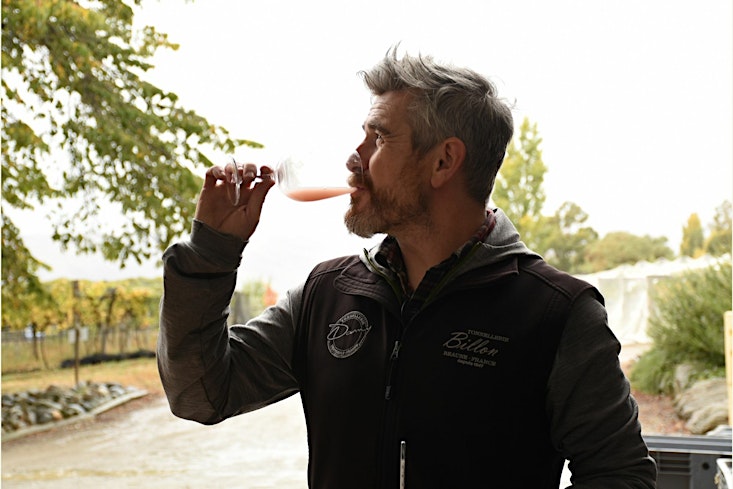
Harvest 2021 and what we can expect from the vintage
Does Pinot Noir Perfection lie ahead?
Winemaker Austin Black puts down his glass for a moment to provide us with some insights from inside the Terra Sancta winery.
Q: What makes for a good harvest in Central Otago?
"Ideally, we want a long, even ripening period with cool nights to preserve the acidity, warm days to develop the flavours and low humidity with just enough rainfall to ensure fruit quality. This used to be the norm in Central Otago but climate change is bringing with it greater volatility in conditions."
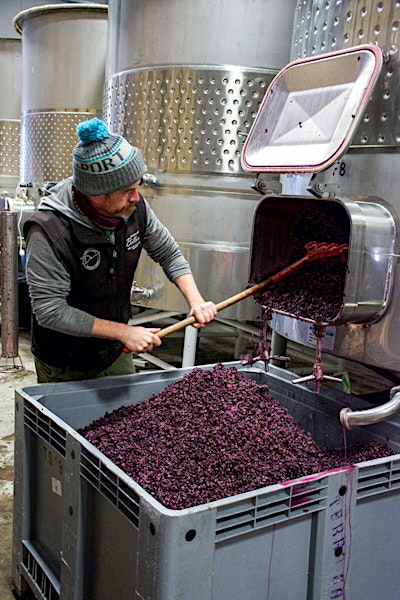
Q: What does this mean for Terra Sancta?
"It changes some of the farming practices and makes us more aware of canopy management. This means removing leaves to assist air flow through the vines to ensure disease pressure is kept to a minimum."
Q: What’s been the best harvest so far?
"2021 is shaping up to be that year. Once we got to the Christmas period, conditions were good with just enough moisture and humidity. The fruit was even in sugar and acidity, the yield was a bit down but not too low, and the flavour was good."
Q. Why does Terra Sancta choose to handpick grapes over using machinery?
"For us it’s about protecting the vine and the fruit as much as possible. Handpicking is more gentle as you have someone experienced in the vineyard making decisions on what to pick and doing the first sorting of the fruit in the vineyard. In contrast, a machine harvester picks everything. The importance of this is that the bunches of grapes are delivered to me intact so I can make the choice of whether to use the whole bunch or separate the fruit. This is based on what will best suit the fruit quantity from any parcel of the vineyard. We can then de-stem if we don’t want a full bunch and do it gently so we have whole berries. This is really important because of all the flavours you get. Whole bunches give you structure from the stems, and a spicy and green character that develops into a clove flavour in the bottle. In contrast, when de-stemmed, the whole berry gives you a fruity mid palate. However, if you use a machine, you get no options in this process."

Q: What was something interesting or surprising that happened at this year’s harvest?
"Getting my steamer to clean barrels but that was really just fun for me as the winemaker. It’s funny because better vintages are when nothing surprising happens because it all is planned. Everything ripened at a nice time and we picked when we wanted to. This year, we didn’t have to prioritise anything because it was a long drawn out picking season - the 27th of March - 7th of May. That's a good 6 weeks of picking, which is easier for me to manage logistically. In 2018, everything was done in 12 days so that was a lot more rushed (and surprising). We’re also making a late harvest wine for the first time since 2015, so we’ll probably still be picking at the end of June."
Q. What's the life of a winemaker like during harvest?
"You work 7 days a week for 8 weeks and all you can think about is numbers. Tasting the fruit, getting the acid and sugar numbers, tonnages, litres, how many barrels you need, constantly calculating volumes to plan. You arrive at work around 8am and leave anywhere between 6-9pm and clean everything 5 times a day. You go home and eat, shower, sleep, and repeat. And in a case like mine where your missus is doing the same thing, you just don’t see much of each other that time of year."
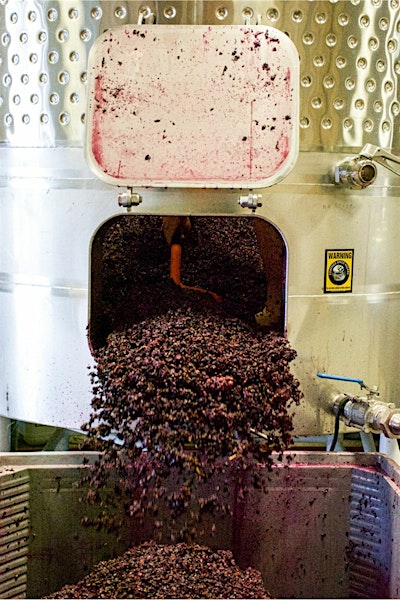
Q. What do your days look like in the vineyard and winery?
"We pick for white wine in the morning. When that comes in, we will crush and de-stem the fruit for all of our white wines, purely because I like wines with more tannin and texture. I want the juice to be in contact with the skins more so we let that sit in the tank overnight at 4-5 degrees and the next day we’ll rack that into barrels. In the afternoon we process the red fruit. That’s de-stemmed, not crushed, and brought straight into the winery and left to sit until it decides it wants to start fermenting. We don't add yeast or acid in our wine making process. We do the bare minimum that we have to do to the fruit. We don’t filter when we bottle aside from adding a little bit of sulphur. That means at harvest there’s not a lot of wine work, just processing the fruit into the winery and letting it do what it wants to do."
Q. What grape varietal is the most work?
"In terms of winemaking, there isn’t one wine varietal that is harder than the others. Growing wise, Pinot Noir is the most finicky. It’s comprised of small, tight bunches and thin skin, so you can get damage from hail or disease making it harder to grow. The most analysis and thought goes into the Terra Sancta Rosé. Although we take the fruit from the same blocks, we’ll pick it in 12-15 parcels in order to pick when they are at their optimum. I am constantly thinking of where we want the wine to end up. For instance, if I pick one part that has more acid than another part, I have to keep them separate and treat them differently so they’re still in balance when they are all blended. It’s quite complex because we want the perfect balance of sugar and acid with our Rose and then of course the colour needs to be just right as well. Each barrel has its own fermentation and we want it to show the attributes of the part of the vineyard that the fruit comes from - so there are lots of moving parts that must be considered within the context of a final blend at the right volume. In contrast, a single block Pinot Noir comes from just one block with one ferment, so it’s much easier."
Q. What's your favourite part of the wine making process?
"Blending the finished wines. Harvest is the most important time of year, but it’s the most stressful as well. The finishing and blending at the end of the year is the most exciting for me. With the Rosé we try to bottle between August and September, so around July we’ll look at all the ferments and barrels and get the finished wine assembled."
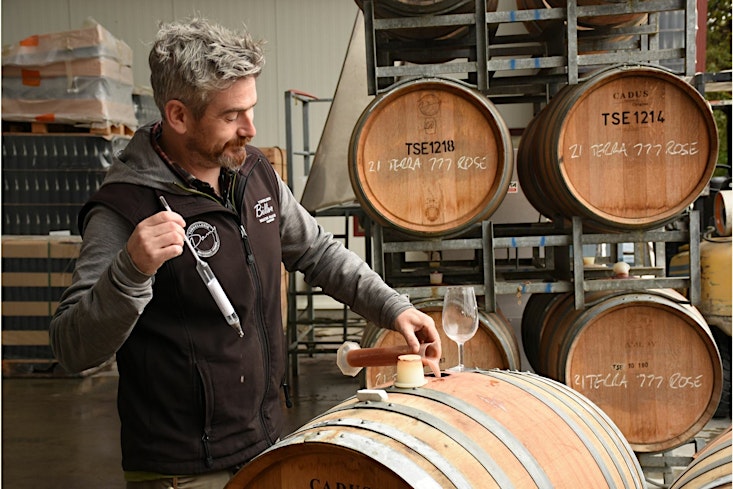
Q. What does blending entail?
"I take all the bits and pieces from harvest, put them together in the tank and taste every barrel, pick the ones I prefer and put them all together to make the best representation of the vineyard or specific block. For example, with the Slapjack Pinot Noir, we might have 20-30 barrels but at the end we’ll only pick the very best of them, so we may end up with only 10 barrels to represent Slapjack Block Pinot Noir."

Q. What varietal do you like blending the most at Terra Sancta?
"My favourite wine is the Shingle Beach Pinot Noir, the Riesling, and the Special Release Italian. I like this red blend because it involves an unique and interesting blending process. I’m still learning about Italian varieties and their characteristics so for me it’s new and different."
Q. What are you most excited about from the 2021 vintage?
"Lola’s Pinot Gris looks really strong, the Riverblock Chardonnay looks really strong, and the Slapjack Pinot Noir always performs and this year the vines are 30 years old - so I'm expecting something special from Slapjack Block this year."
Q. What will be the biggest challenge this year?
"Luckily this has been one of the vintages where everything has gone well. If I had to choose the biggest challenge, it would be planning and getting ready for the next Aperitivo Botanical. This means we have to start planning and foraging for ingredients. Because the harvest has finished later, nursing the last of the ferments through can be challenging because it starts to get cold and so it slows everything down. Especially with the white wines, it can take longer to get there. "
Q. What are some attributes you expect to come out in the wine this year?
"I think this year the balance of texture and acidity will be really good because we were able to pick every parcel when we wanted, so the acid numbers are really strong. This means we don’t have to adjust the acidity and the ferments are happier and develop more texture and weight bringing out the identity from each site."
Q. At what point in the winemaking process can you tell that it’s going to be an award-winning wine?
"Your first clue is in the vineyard. If the fruit is coming in the way you want it, and it’s clean, then you have a chance to make a good wine. From the moment the grapes are picked, you can’t make the wine better, because it’s all based on the fruit that comes in. From there it’s hard to tell, the wines look pretty compressed and unexpressive until about January of next year. It’s really not until after it’s been in the bottle for a little while that you know how great the wine will be. But really the first clue is when the grapes come in, so that’s why I think 2021 will be the best so far. "
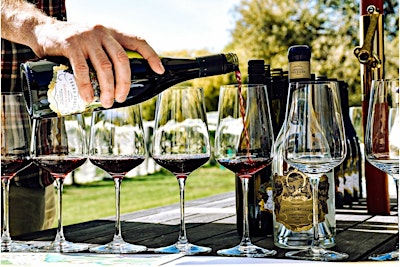
We look forward to the Terra Sancta wines of 2021 - the proof as they say is in the Pinot!